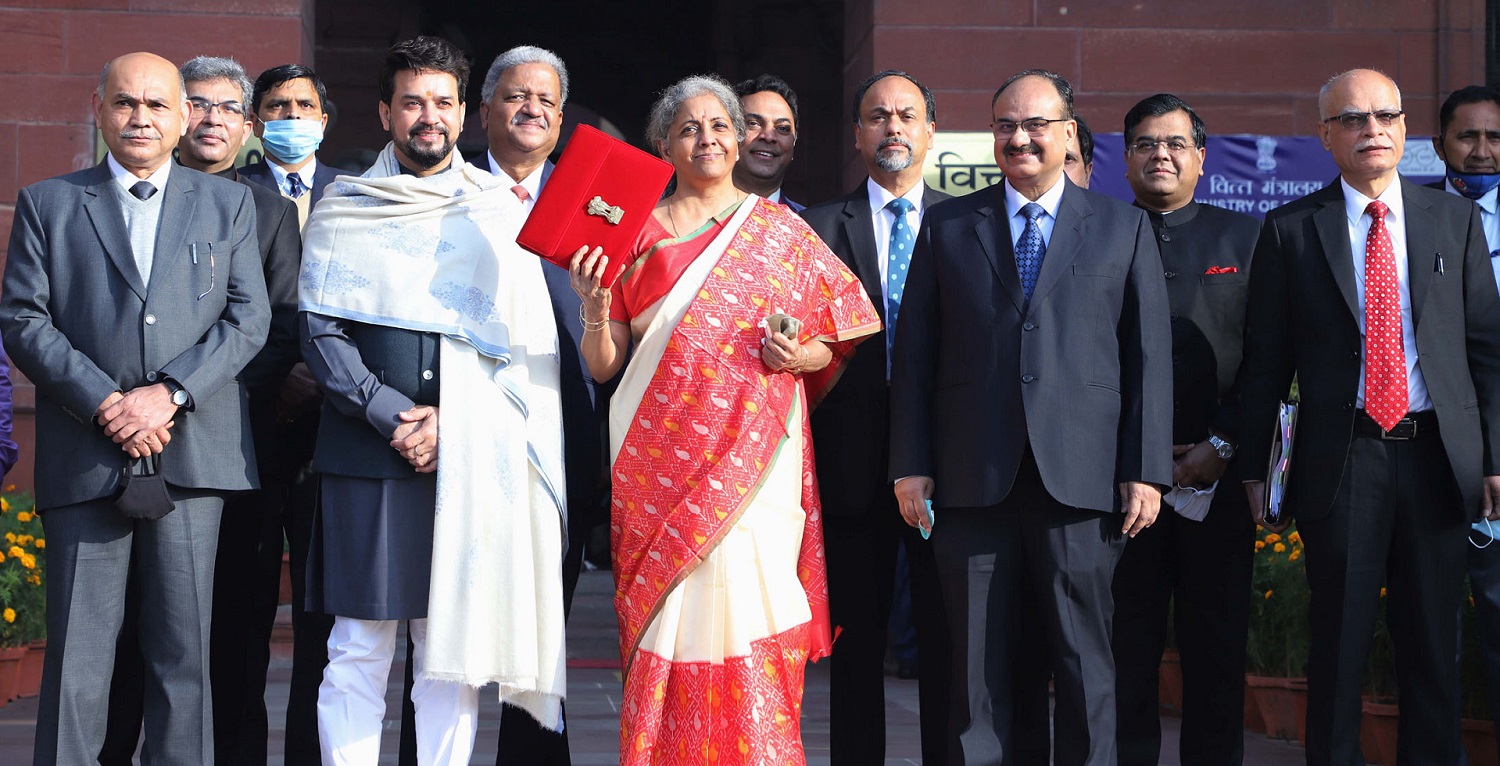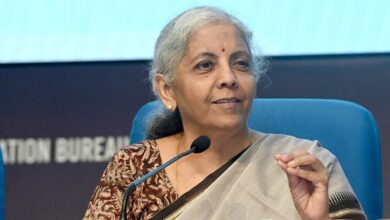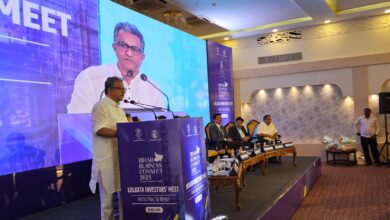Union Budget 2021-22 seeks to boost expenditure to re-energise Covid-hit economy

Prime Minister Narendra Modi government has decided to boost expenditure, especially on healthcare, infrastructure and rural development in order to re-energise the Covid-hit economy. Outlay for healthcare and well-being has been increased by a whopping 137 per cent to Rs.2.24 lakh crore. Provision of Rs. 35,000 crore has been made for Covid-19 vaccine in 2021-22.
Finance Minister Nirmala Sitharaman on Monday presented the first union budget of this new decade in the backdrop of unprecedented Covid-19 crisis. Capital expenditure for the financial year 2021-22 will be increased by 34.5 per cent to Rs. 5.54 lakh crore as compared with Rs.4.12 lakh crore allocated in 2020-21.
This was Sitharaman’s second budget and the first ever digital Union Budget. Presenting the budget in the Lok Sabha, Sitharaman stated that India’s fight against Covid-19 would contiue in 2021. “This moment in history, when the political, economic, and strategic relations in the post-COVID world are changing, is the dawn of a new era – one in which India is well-poised to truly be the land of promise and hope.”
She said the “Budget proposals will further strengthen the Sankalp of Nation First, Doubling Farmer’s Income, Strong Infrastructure, Healthy India, Good Governance, Opportunities for youth, Education for All, Women Empowerment, and Inclusive Development among others.” Additionally, on the path to fast-implementation are the 13 promises of Budget 2015-16, which were to materialise during the AmrutMahotsav of 2022, on the 75th year of India’s Independence.
According to the finance minister, the budget proposals for 2021-22 rest on 6 pillars:
- Health and Wellbeing
- Physical & Financial Capital, and Infrastructure
- Inclusive Development for Aspirational India
- Reinvigorating Human Capital
- Innovation and R&D
- Minimum Government and Maximum Governance
Health and Wellbeing
There is substantial increase in investment in health infrastructure. Budget outlay for health and wellbeing is increased to Rs.2,23,846 crore for 2021-22 as against Rs.94,452 crore budgeted for 2020-21, an increase of 137 per cent.
The Finance Minister announced that a new centrally sponsored scheme, PM AatmaNirbhar Swasth Bharat Yojana, will be launched with an outlay of about Rs 64,180 crore over the next six years. This will develop capacities of primary, secondary, and tertiary care health systems, strengthen existing national institutions, and create new institutions, to cater to detection and cure of new and emerging diseases. This will be in addition to the National Health Mission. The main interventions under the scheme are:
- Support for 17,788 rural and 11,024 urban Health and Wellness Centers
- Setting up integrated public health labs in all districts and 3382 block public health units in 11 states;
- Establishing critical care hospital blocks in 602 districts and 12 central institutions;
- Strengthening of the National Centre for Disease Control (NCDC), its 5 regional branches and 20 metropolitan health surveillance units;
- Expansion of the Integrated Health Information Portal to all States/UTs to connect all public health labs;
- Operationalisation of 17 new Public Health Units and strengthening of 33 existing Public Health Units at Points of Entry, that is at 32 Airports, 11 Seaports and 7 land crossings;
- Setting up of 15 Health Emergency Operation Centers and 2 mobile hospitals; and
- Setting up of a national institution for One Health, a Regional Research Platform for WHO South East Asia Region, 9 Bio-Safety Level III laboratories and 4 regional National Institutes for Virology.
Roads and Highways Infrastructure
Sitharaman announced that more than 13,000 km length of roads, at a cost of Rs 3.3 lakh crore, has already been awarded under the Rs. 5.35 lakh crore Bharatmala Pariyojana project of which 3,800 kms have been constructed. By March 2022, Government would be awarding another 8,500 kms and complete an additional 11,000 kms of national highway corridors. To further augment road infrastructure, more economic corridors are also being planned. She also provided an enhanced outlay of Rs. 1,18,101 lakh crore for Ministry of Road Transport and Highways, of which Rs.1,08,230 crore is for capital, the highest ever.
Railway Infrastructure
Indian Railways have prepared a National Rail Plan for India – 2030. The Plan is to create a ‘future ready’ Railway system by 2030. Bringing down the logistic costs for our industry is at the core of our strategy to enable ‘Make in India’. It is expected that Western Dedicated Freight Corridor (DFC) and Eastern DFC will be commissioned by June 2022.
Budget also provided a record sum of Rs. 1,10,055 crore, for Railways of which Rs. 1,07,100 crore is for capital expenditure.
Education
The finance minister announced special provisions for implementation of the National Education Policy (NEP). 15,000 schools will be strengthened by implementing all NEP components. These schools will act as exemplar schools in their regions for mentoring others. 100 new Sainik Schools will be set up in partnership with NGOs/private schools/states.
Legislation will be introduced to setup Higher Education Commission of India as an umbrella body with 4 separate vehicles for standard setting, accreditation, regulation, and funding.
The finance minister has proposed the creation of formal umbrella structure to cover all government colleges, universities, research institutions in a city for greater synergy. Glue grant to implement the same across 9 cities.
Skilling
The finance minister proposed amendment to Apprenticeship Act to enhance opportunities for youth. A provision of Rs. 3000 crore has been made for realignment of existing National Apprenticeship Training Scheme (NATS) towards post-education apprenticeship, training of graduates and diploma holders in Engineering.
Fiscal Deficit
The increased spending will lead to a sharp jump in the fiscal deficit. For the financial year 2020-21 the fiscal deficit is pegged at 9.5 per cent of GDP. It will be curtailed at 6.8 per cent during the year 2021-22. The fiscal deficit will be funded through government borrowings, multilateral borrowings, Small Saving Funds and short term borrowings. Gross borrowing from the market for the next year is estimated to be around 12 lakh crore.
Sitharaman said that the government plans to continue on the path of fiscal consolidation, achieving a fiscal deficit level below 4.5 per cent of GDP by 2025-26 with a fairly steady decline over the period.
[/vc_column_text][/vc_column][/vc_row]




